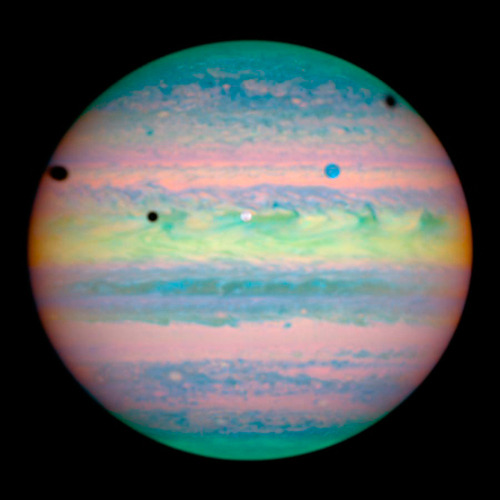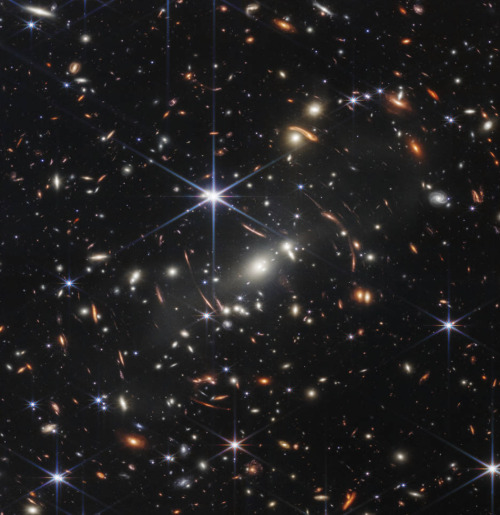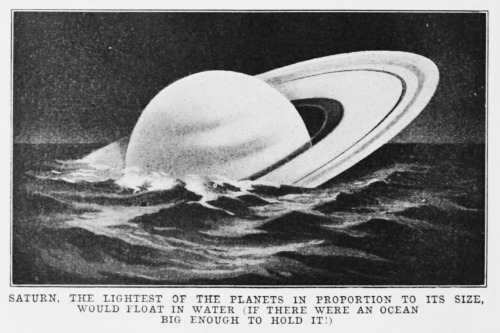Starlost - Space Fucks


More Posts from Starlost and Others
In relation to the Earth, I’m not that far away from where I was born. But in relation to the Universe, I’m millions if not billions of miles away from where I was actually born, and I’ll likely never return there.

NGC 2419, Wanderer

M2 9: Wings of a Butterfly Nebula : Are stars better appreciated for their art after they die? Actually, stars usually create their most artistic displays as they die. In the case of low-mass stars like our Sun and M2-9 pictured above, the stars transform themselves from normal stars to white dwarfs by casting off their outer gaseous envelopes. The expended gas frequently forms an impressive display called a planetary nebula that fades gradually over thousands of years. M2-9, a butterfly planetary nebula 2100 light-years away shown in representative colors, has wings that tell a strange but incomplete tale. In the center, two stars orbit inside a gaseous disk 10 times the orbit of Pluto. The expelled envelope of the dying star breaks out from the disk creating the bipolar appearance. Much remains unknown about the physical processes that cause planetary nebulae. via NASA
js
It was a huge disappointment as a child to fall in love with the stars and then find out how much math it requires to get anywhere near them.
what if...................... i was chilling............ and then a tumblr infographic said only 8% of all the planets that will ever exist have already been formed and earth is one of them there are 92% more planets to exist we're not alone we're just first we're not alone we're just early if the entire universe was 100 planets we would be in the first eight and the other ninety-two don't exist yet new planets will be born as ours becomes a faded memory to the vast expanse of the universe we're not alone we're just early our entire existence is a smear on the windscreen of the cosmos the universe is unimaginably big but unimaginably small compared to what it will be we're not alone we won't be alone we're just early
![The Lightest (i.e., Least Massive) Known Star, OTS 44 [3000 X 2400]](https://64.media.tumblr.com/7ce349b6a3bf21005fa9d453fc4e3790/tumblr_n6d9w27NCh1tuy5mao1_500.jpg)
The lightest (i.e., least massive) known star, OTS 44 [3000 x 2400]

This first image from NASA’s James Webb Space Telescope is the deepest and sharpest infrared image of the distant universe to date. Known as Webb’s First Deep Field, this image of galaxy cluster SMACS 0723 is overflowing with detail. Thousands of galaxies – including the faintest objects ever observed in the infrared – have appeared in Webb’s view for the first time. This slice of the vast universe covers a patch of sky approximately the size of a grain of sand held at arm’s length by someone on the ground.


Behemoth Black Hole Found in an Unlikely Place by NASA Goddard Photo and Video

Jovian ‘Twilight Zone’
This image captures the swirling cloud formations around the south pole of Jupiter, looking up toward the equatorial region. NASA’s Juno spacecraft took the color-enhanced image during its eleventh close flyby of the gas giant planet on Feb. 7 at 7:11 a.m. PST (10:11 a.m. EST). At the time, the spacecraft was 74,896 miles (120,533 kilometers) from the tops of Jupiter’s clouds at 84.9 degrees south latitude. To make features more visible in Jupiter’s terminator — the region where day meets night — the Juno team adjusted JunoCam so that it would perform like a portrait photographer taking multiple photos at different exposures, hoping to capture one image with the intended light balance. For JunoCam to collect enough light to reveal features in Jupiter’s dark twilight zone, the much brighter illuminated day-side of Jupiter becomes overexposed with the higher exposure. Credit: NASA/JPL-Caltech/SwRI/MSSS/Gerald Eichstädt
-
 catsandwildlife liked this · 1 month ago
catsandwildlife liked this · 1 month ago -
 alavenderkat liked this · 1 month ago
alavenderkat liked this · 1 month ago -
 crimedramalover liked this · 1 month ago
crimedramalover liked this · 1 month ago -
 gelidiocchi reblogged this · 1 month ago
gelidiocchi reblogged this · 1 month ago -
 siobonbon reblogged this · 1 month ago
siobonbon reblogged this · 1 month ago -
 softneomiro reblogged this · 1 month ago
softneomiro reblogged this · 1 month ago -
 softneomiro liked this · 1 month ago
softneomiro liked this · 1 month ago -
 polari28 reblogged this · 1 month ago
polari28 reblogged this · 1 month ago -
 peach-clementines liked this · 1 month ago
peach-clementines liked this · 1 month ago -
 ghiblie liked this · 1 month ago
ghiblie liked this · 1 month ago -
 beloathed reblogged this · 1 month ago
beloathed reblogged this · 1 month ago -
 beloathed liked this · 1 month ago
beloathed liked this · 1 month ago -
 sleepinnyc liked this · 1 month ago
sleepinnyc liked this · 1 month ago -
 harleenquinzel reblogged this · 1 month ago
harleenquinzel reblogged this · 1 month ago -
 gammawave reblogged this · 1 month ago
gammawave reblogged this · 1 month ago -
 mysmokinggun reblogged this · 1 month ago
mysmokinggun reblogged this · 1 month ago -
 champagneissues liked this · 1 month ago
champagneissues liked this · 1 month ago -
 chlo3lise reblogged this · 1 month ago
chlo3lise reblogged this · 1 month ago -
 chlo3lise liked this · 1 month ago
chlo3lise liked this · 1 month ago -
 porcelainie reblogged this · 1 month ago
porcelainie reblogged this · 1 month ago -
 porcelainie liked this · 1 month ago
porcelainie liked this · 1 month ago -
 watilda reblogged this · 1 month ago
watilda reblogged this · 1 month ago -
 bulasma liked this · 1 month ago
bulasma liked this · 1 month ago -
 goyangi reblogged this · 1 month ago
goyangi reblogged this · 1 month ago -
 goyangi liked this · 1 month ago
goyangi liked this · 1 month ago -
 expatiating liked this · 1 month ago
expatiating liked this · 1 month ago -
 laufeysons reblogged this · 1 month ago
laufeysons reblogged this · 1 month ago -
 robinniko reblogged this · 1 month ago
robinniko reblogged this · 1 month ago -
 carpusofbonees reblogged this · 2 months ago
carpusofbonees reblogged this · 2 months ago -
 yah-daddy liked this · 2 months ago
yah-daddy liked this · 2 months ago -
 keremilee liked this · 2 months ago
keremilee liked this · 2 months ago -
 miawlabakim liked this · 2 months ago
miawlabakim liked this · 2 months ago -
 statuschaoticc liked this · 2 months ago
statuschaoticc liked this · 2 months ago -
 m3ybuz reblogged this · 2 months ago
m3ybuz reblogged this · 2 months ago -
 xyw reblogged this · 2 months ago
xyw reblogged this · 2 months ago -
 robinniko liked this · 2 months ago
robinniko liked this · 2 months ago -
 psychcoscs liked this · 3 months ago
psychcoscs liked this · 3 months ago -
 xyw liked this · 4 months ago
xyw liked this · 4 months ago -
 pinkishrat reblogged this · 4 months ago
pinkishrat reblogged this · 4 months ago -
 soniciselectricc liked this · 10 months ago
soniciselectricc liked this · 10 months ago -
 zenithzephyrus reblogged this · 10 months ago
zenithzephyrus reblogged this · 10 months ago -
 ahunkofmanmeat reblogged this · 10 months ago
ahunkofmanmeat reblogged this · 10 months ago -
 ahunkofmanmeat liked this · 10 months ago
ahunkofmanmeat liked this · 10 months ago -
 drivenaxl86 liked this · 10 months ago
drivenaxl86 liked this · 10 months ago -
 littlebatss liked this · 1 year ago
littlebatss liked this · 1 year ago -
 theneptunenymph reblogged this · 1 year ago
theneptunenymph reblogged this · 1 year ago -
 psychedelic-sagittarius liked this · 1 year ago
psychedelic-sagittarius liked this · 1 year ago -
 screamingwombatgirl reblogged this · 1 year ago
screamingwombatgirl reblogged this · 1 year ago

andrei, he/him, 21, made this at 14 when i was a space nerd but i never fully grew out of that phase so,,,,..,hubble telescope + alien life + exoplanet + sci fi nerd
245 posts